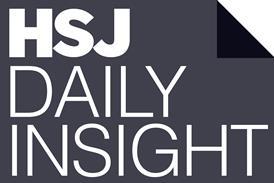Advances in technology have transformed the way healthcare information is gathered and stored and harnessing this data might in turn transform the future of healthcare, notes Sudin Kansakar
Everybody utilises the health and social care system at some point in their life. Today, patient visits may involve long waiting times and understaffed services with little to no access to real time data to inform decisions and manage day to day operations. These challenges are interconnected and affect the patient experience as well as health outcomes.
Changes and advances in technology provide the opportunity to reconsider every aspect of health and social care, from its delivery to its funding model, and to address issues like those above.
Technology is changing the way healthcare information is gathered, stored and shared, and data is at the centre of it
Like the rest of the world, healthcare is becoming increasingly connected but also increasingly complex. In the near term, real time data will help with better and earlier diagnosis and treatment, and in the long term, may lead to mainstream use of precision healthcare.
Technology is changing the way healthcare information is gathered, stored and shared, and data is at the centre of it. This begs the question, how is data changing patient care now?
The future of healthcare is being transformed in three major ways:
- Orchestrating care
- Providing alternative care delivery settings
- Proactively managing care
Orchestrating care
Cutting edge solutions such as the Command Centre & Wall of Analytics (WoATM), an expert orchestrator of services, are changing hospital operations and improving patient outcomes and experiences. The Command Centre serves as a central hub for the hospital’s many functions and services. It helps address issues that have plagued healthcare for decades, such as capacity, safety, quality and wait times.
One such example is Humber River Hospital’s Command Centre transformation programme, which was designed, delivered and embedded in partnership with GE Healthcare Partners and uses purpose built, real time analytical tiles to drive action and provide decision support for HRH staff.
“Our goal in the Command Centre is to combine cutting edge technology, insight rich data and human expertise to deliver the impact that is felt immediately by patients, physicians and care providers,” says Barbara Collins, president and CEO of HRH.
An example of a tile that will support day to day operations is the Delays in Care tile.

This is a situational awareness and exception alert analytic. The tile will provide visibility of delayed care activities, thereby enabling actions to be taken to reduce delays and improve patient flow and optimise length of stay.
These are one of many tiles used in the WoATM to orchestrate care to provide the right care at the right time, every time. Beyond orchestrating care, we also need to ensure that we provide care in the right settings.
Providing alternative care delivery settings
The increasing complexity of health and social care and emerging treatment options mean that more patients are being treated outside of an acute care hospital setting. This may include tracking prescription, diagnosis, home care and planning future hospital visits.
Applications such as GP at Hand offer virtual GP consultation in the NHS, whereas Now GP is Europe’s largest virtual GP covering 1 million people. These apps are providing innovative care beyond the four walls of the hospital, leading to data creation.
The increasing complexity of health and social care and emerging treatment options mean that more patients are being treated outside of an acute care hospital setting
The potential of technology and data to deliver alternative services, and significantly improve patient care and efficiency is a given. The rapid adoption of telemedicine as a service shows the value of data and technology.
Sharing data across providers and commissioners is vital to improving care in alternative settings, however, trust and confidence are vital to achieve the benefits we seek.
Proactively managing care
Besides orchestrating care, and providing alternative ways of delivering care, wouldn’t it also be nice to harness data to proactively manage care and improve patient outcomes?
With an increased explosion of data, and new machine learning algorithms and artificial intelligence, there is a trend to shift from reactive care to proactive and preventive care. Algorithms with machine learning capabilities are providing useful diagnostic solutions, such as spotting cancers from test results. A recent study conducted by Stanford Medical found that algorithms can match the performance of a dermatologist in detecting skin cancer.
Only through a strong focus on a data centred approach and commitment to innovation can providers embrace the data revolution for the benefit of their patients
Similarly, GE Healthcare has partnered with Roche to build precision medical oncology platform, which will employ advance analytics to develop decision support software for earlier diagnosis and preventive treatment.
There is significant potential for catching, predicting and preventing diseases at earlier stages, and proactively managing care.
The golden thread is the power of data and its potential to transform the future of health and social care. The opportunities presented by data are enormous, but so are the obstacles this sector faces.
We have more data than ever before but also technology to make effective use of it. Only through a strong focus on a data centred approach and commitment to innovation can providers embrace the data revolution for the benefit of their patients.





























1 Readers' comment